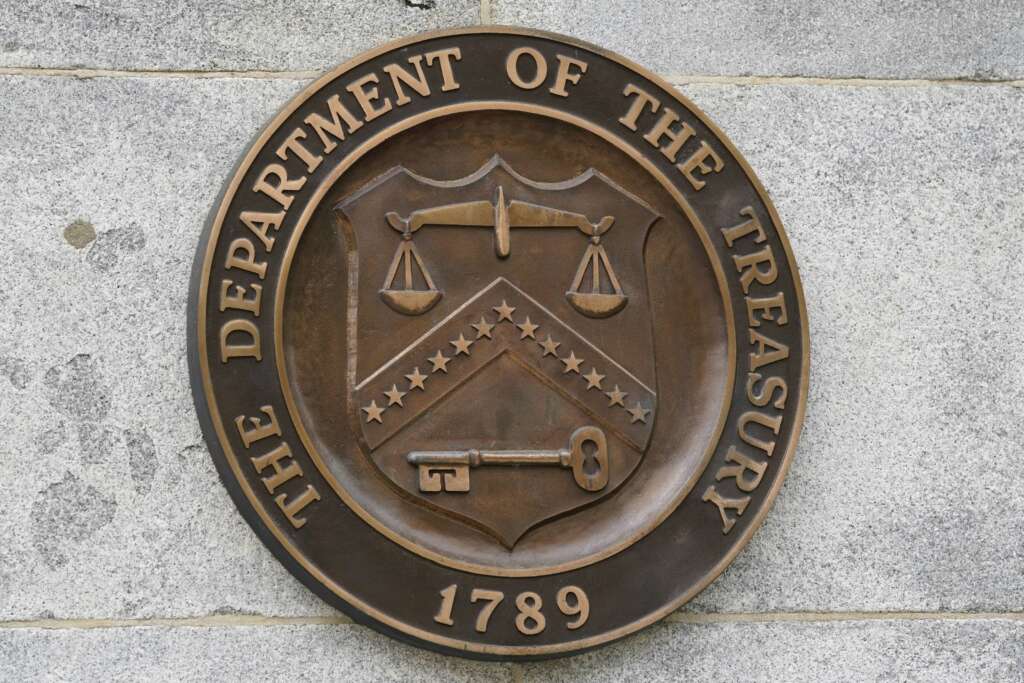
The Treasury Department kept and recovered billions of dollars from fraudsters this year, and is setting more ambitious goals to prevent improper payment in the coming years.
Treasury avoided $4 billion in fraud and improper payments in fiscal 2024. Officials said Treasury intercepted about $650 million of fraudulent payments the year prior.
The department recovered about $1 billion in fiscal 2024, by using artificial intelligence tools to identify cases of check fraud on the tens of millions of payments it makes every year.
Treasury also prevented improper payments totaling $2.5 billion by flagging high-risk transactions.
Deputy Treasury Secretary Wally Adeyemo said in a statement Thursday that the department is making significant progress in helping agencies “pay the right person, in the right amount, at the right time.”
“We will continue to partner with others in the federal government to equip them with the necessary tools, data, and expertise they need to stop improper payments and fraud,” Adeyemo said.
Department officials are building on these fraud-prevention efforts, and expect to prevent $12 billion in improper payments annually by 2029.
Justin Marsico, the chief data officer of Treasury’s Bureau of the Fiscal Service, said the 2029 goal gives department officials time to address longstanding challenges, including greater data sharing between agencies.
“We’ve been able to come up with really new, out-of-the-box ideas, because we know that there’s some time to actually work on them and implement them,” Marsico said on Sept. 19 at a fraud prevention event hosted by AGA (formerly the Association of Government Accountants).
Marsico said Treasury leaders are focused on sharing fraud-prevention best practices across the federal government and flagging suspicious transactions before they’re paid.
“We have a culture of putting up silos when it comes to fraud, where we need to tear them down and be open with each other about what’s happening, what the challenges are,” Marisco said.
Among its projects, the Fiscal Service is working on a pilot to streamline how agencies onboard for its Do Not Pay database.
Emily White, a fiscal affairs specialist at Treasury, said the pilot seeks to address widespread complaints about the time it takes to share valuable data sets between agencies.
“It can take upwards of two years for a customer to onboard and to be able to use data. That’s a lot of wasted time where they could be using and be preventing fraud and improper payments,” White said.
Treasury disburses about 1.4 billion payments worth nearly $7 trillion to more than 100 million people each year.
Fraud is on the rise across the financial sector more broadly. Treasury expects total online payment fraud to reach $362 billion by 2026.
The 2019 Payment Integrity Improvement Act gave the Treasury the authority to share Do Not Pay data with federally funded, state-administered programs.
The department is partnering with the National Association of State Workforce Agencies (NASWA) to ensure state unemployment insurance systems have access to Do Not Pay data, as well as data from the Social Security Administration’s Death Master File.
Renata Miskell, Treasury’s deputy assistant secretary for accounting policy and financial transparency, said the department has an easier time sharing resources with “major hubs of information-sharing” like NASWA, rather than reaching out to each state and territory individually.
“Fraud is a hidden crime. To fight it, you have to find it. If we’re not empowered to use the data to find those hidden patterns, then we’re going to be constantly doing the pay and chase,” Miskell said.
Treasury and the Labor Department announced a data-sharing partnership in May, to provide state unemployment agencies with access to Do Not Pay Working System data sources and services.
These initiatives are among the approximately 10 projects the department is working on, as part of a “blueprint” on payment integrity.
Treasury completed the blueprint’s first phase in September, and is now on a second phase of research and analytics work to make fraud-prevention ideas a reality.
“We have some newly acquired data sets that are very exciting,” Miskell said. “We’re at the cusp of some major insights.”
Miskell said Treasury’s efforts are meant to crack down on a wave of fraud that grew under the height of the COVID-19 pandemic.
“Sometimes people get numb by these numbers,” she said. “We’re talking billions here, and we have just become so numb to it. So, I think we need to continue to increase awareness, because this really does matter to each one of us.
Copyright
© 2024 Federal News Network. All rights reserved. This website is not intended for users located within the European Economic Area.







